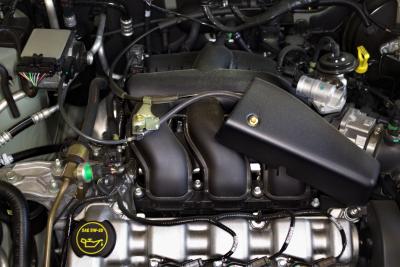
After installing or rebuilding an engine, it must be broken in to seat the new piston compression rings to the cylinder walls. Proper break-in will maximize your engine's power output and minimize oil consumption. Properly seated piston rings prevent combustion gases from escaping the combustion chamber into the crankcase of the engine. This keeps your engine running cleaner and smoother. To properly break in a Chevy engine, a few pre-start steps need to be performed. These steps can be performed by anyone with basic mechanical knowledge. Refer to the vehicle's service manual on fluid levels, fluid specifications, torque specifications and any other needed information.
Check the oil level by removing the dipstick and reading the oil level marks. Before checking the oil level, make sure the vehicle is sitting level. If the oil and filter are not installed, install them now.
Check the brake, power steering, anti-freeze and transmission fluid levels. Fill them to their proper levels. It is important to use new fluids when breaking in a newly rebuilt engine to avoid premature wear and parts failure.
Check all the wires, connectors, hoses, and throttle cables or linkages for proper connection and to ensure they are tight.
Check the battery for proper connection and charge.
Start the engine and let it warm up.
Check the timing and make any necessary timing adjustments at this time (carburetor, throttle body, etc.).
Run the engine between 2,000 and 2,500 RPM for 30 minutes. Do NOT raise and lower the RPM. Keeping a steady RPM reading is key to proper engine break-in.
Idle the engine for 15 minutes. Take this time to check for any fluid leaks on top of the engine, as well as under the vehicle.
Drive the vehicle for approximately 40 to 50 miles, listening for any knocks, detonation pings, or other odd noises. Drive the vehicle up hills. This will make the engine work hard to properly seat the piston rings.
Recheck all of the vehicles fluid levels and top off, if needed.
Replace the engine oil and filter after the first 100 miles of engine use to ensure that there are no harmful metal shavings or filings which may scratch the cylinder walls or cause premature bearing failure.